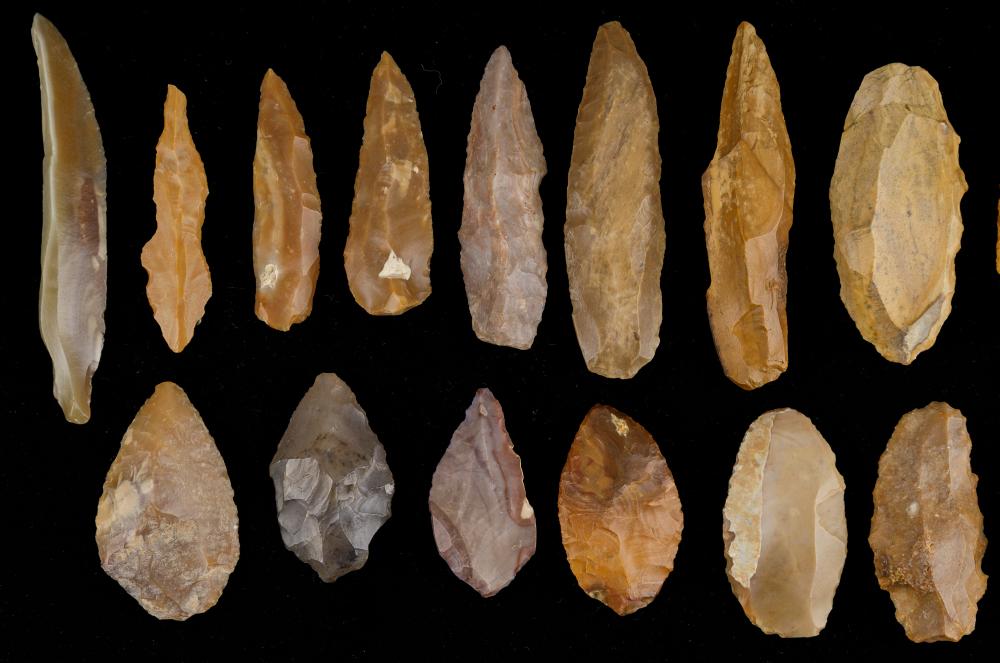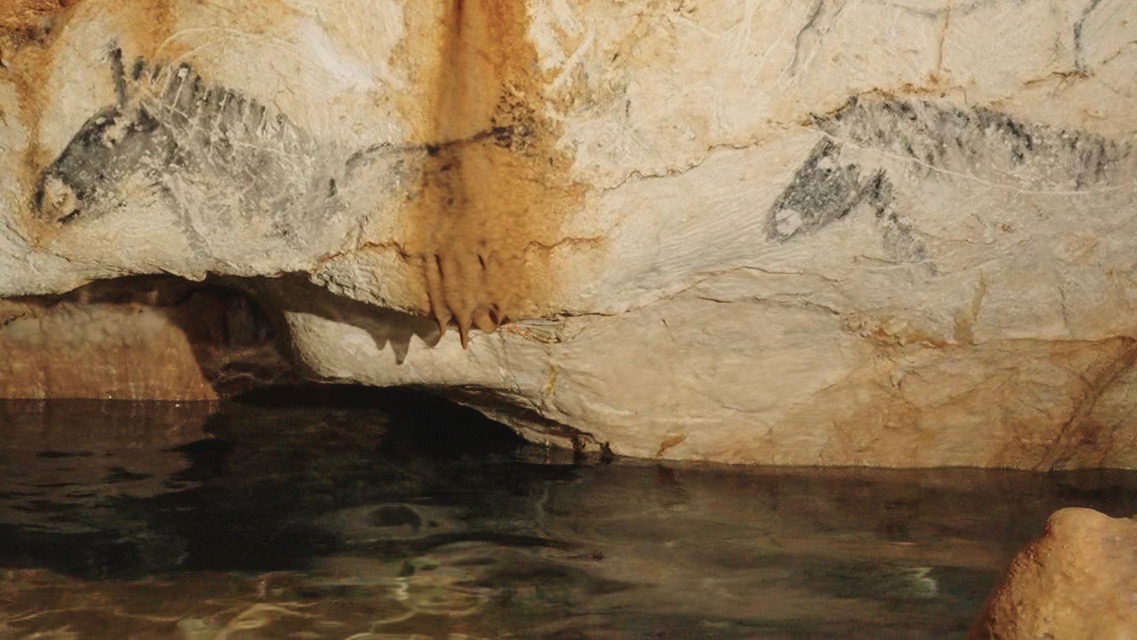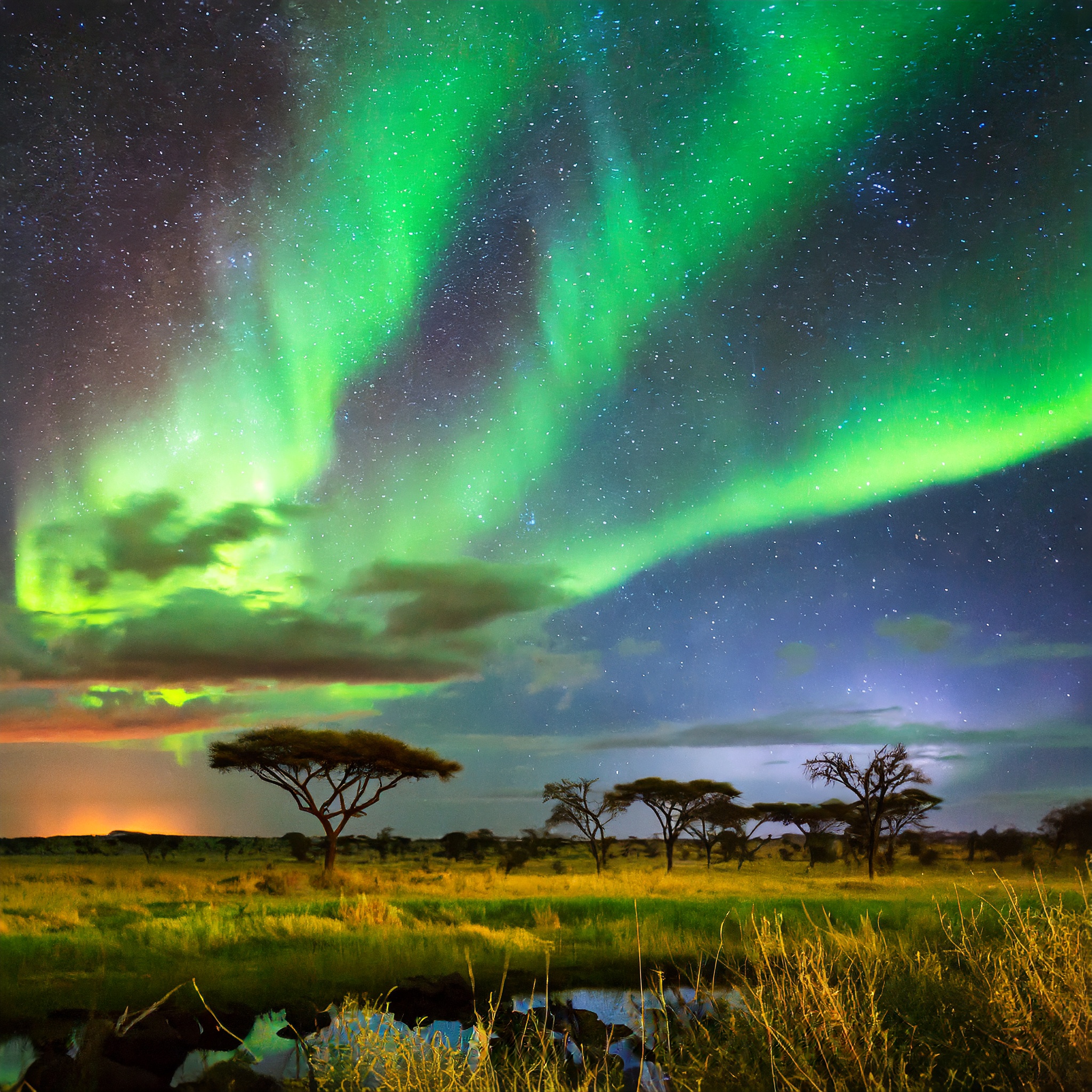Moustrian People (/muˈstɹiːən/)
Moustrian culture1 was the first culture of neanders, emerging in Europe at the dawn of the Pagsian Turning and eventually disappearing by 40,170 BP.
Lifestyle
Moustrians lived in small groups of extended families, usually composed of 20-50 people. They were nomadic, but also tended not to drift very far in their hunting and foraging. As a result, individuals in a neander clan would frequently encounter other neander clans regularly enough to recognize them, despite their low overall population size. The Bruniquel cave shelter became a popular gathering spot for art, rest, and communal activities. Moustrians hunted with short, thick spears and stone axes. The elders walked with the help of walking sticks. They painted their bodies with red ochre and grey ash to make patterns. They enjoyed gathering berries and mushrooms. They hunted large animals, usually preferring to go after animals that would supply enough meat for their entire clan rather than having to kill many animals. They were deeply affected by the beauty of patterns. When not searching for food, they would spend their time arranging bones or seashells into complex arrangements on the ground, painting their bodies in swirling patterns, or just staring off into the sunset. To modern eyes, their behavior would seem deeply contemplative and peaceful... or perhaps high. The Moustrian lifestyle was not urgent or rushed. A Moustrian might gaze deeply at a pine cone for an entire afternoon, appreciating its beauty and entranced by the sheer joy of life.Divergences
When glaciers began to creep down from the north during the Recosian Turning, movement became more difficult and Moustrian culture fragmented as neanders in different pockets of isolated communities began to specialize their practices and develop new skills. This gave rise to the Micoquien neanders in Iberia, the Hušnjakovo neanders in Cycladia, and the Mezmaien neanders in the Caucusus. During that period only a few bold groups left their traditional hunting and foraging region to find new lands to call their home: the Chagyrskaya travelled all the way to Altai, the Teshik-Tash ended up in Airyanem Vaejah, and the Emiran established a shared community with humans in the Levant. The next wave of changes took place during the Pluvial Turning, in response to the sudden influx of humans into Europe. Some actively reached out to humans in an attempt to collaborate with them, giving rise to the Szeletian mixed human-neander culture. Another group of clans headed southward and displaced the neanders in the Caucusus, establishing their own Bondi culture there. Finally, another group headed eastward across Ariana and unexpectedly came across the Ust'-Ishim humans on their journey. They got along so well that some of the Ust' joined the neanders when they continued on their way. When their expedition reached the hills of Tian Shan they formed twin societies adjascent to each other: the neander Karakol culture and the mixed neander-human Ust Karakol culture.Dissolution
The mass emigration out of Europe caused Moustrian culture to dwindle and fragment. This decline was further aggravated by the onset of Laschamps Excursion in 42,350 BP, which harmed all neanders, not only Moustrians. The harshness of daytime ultraviolet light had a crippling effect on many neanders, who were bewildered and unable to identify the cause of their burns and feeling of sickness. Moreover, the auroras in the nighttime sky across all of Europe were beautiful to behold, and many neanders saw it as a sign of the end of times and lost much of their motivation and drive. The Moustrian way of life eventually disappeared completely by 40,170 BP.Migration Maps
Species
Key Attributes
nomadic hunting gathering stone tools
Founding
the beginning
Disbandment
40,170 BP
Diverged culture(s)
Homeland






